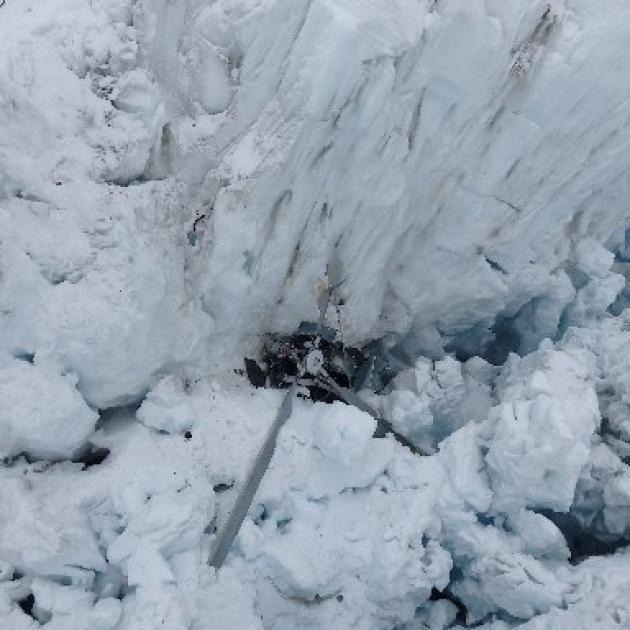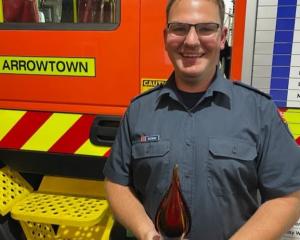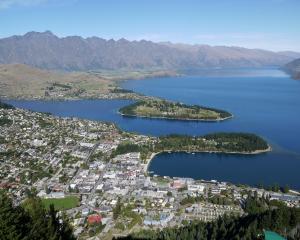
Crews are again unable to get on to Fox Glacier to continue the recovery operation after a helicopter crash which killed seven people at the weekend, but are hoping for better conditions tomorrow.
Alpine Adventures pilot Mitch Gameren (28) was killed in the crash on Saturday, along with tourists Andrew Virco (50), his partner Katharine Walker (51), of Cambridge, England; Nigel Edwin Charlton (66) and his wife Cynthia (70), from Romsey, Hampshire, England; and Australians Sovannmony Leang (27) and Josephine Gibson (29).
Inspector John Canning told reporters this morning a break in the weather of at least two hours would be required to continue the recovery.
Police were not overly optimistic of that happening today, however the forecast looked more positive for tomorrow, he said.
Alpine Cliff Rescue and victim identification teams were ready to start as soon as that opportunity arose, Insp Canning said.
The weather prevented any further work on Fox Glacier yesterday.
Police had been advised the glacier is unstable and moving up to 1 metre a day, which could affect the operation. A staged area would be cut out in the ice so the ground was stable enough to stand on, Insp Canning said.
Post-mortem examinations would take place this morning in Christchurch on the four bodies recovered so far.
Suggestion of mechanical failure in chopper
The apparent lack of significant damage to the rotor blades of the helicopter that crashed on Fox Glacier at the weeked, killing seven people, has raised a suggestion the cause could have been mechanical failure.
An experienced helicopter pilot told the Otago Daily Times yesterday it was unusual for the fibreglass blades of an AS350 Squirrel helicopter not to be badly damaged in a crash.
''A helicopter that went into that location under power would have had the blades pretty much ripped off,'' he said.
A photo from the crash scene shows little obvious damage to two of the three blades.
The pilot, who did not want to be named, said the intact rotor blades suggested to him they were turning ''under very little momentum'' when they hit the ice.
''It's very, very difficult to say, but there's a possibility that [the crash] was caused through mechanical failure.''
If there was a failure, he considered it more likely to be with the transmission system than with the engine.
After an engine failure, the rotor blades were likely to still be turning ''quite considerably'' as a result of auto rotation. But a transmission system problem could lead to the blades becoming ''locked up''.
He admitted the idea was ''completely hypothetical'' and there could well be other reasons for the blades not being damaged.
''But it's still very unusual,'' he said. It was ''highly unlikely'' a helicopter's transmission would seize up, he said, but it was ''not completely outside the bounds of possibility''.
He referred to a Sikorsky S-92 crashing in Canada in 2009, killing 17 people, after it developed a transmission oil leak.
''If [the transmission] was to seize up and stop then effectively, it's like the wings falling off a fixed-wing aircraft.
''It just ceases to fly. There's no gliding capability.
''The gliding capability relies entirely on the main rotors being able to spin,'' he said.
A Squirrel's jet turbine engine turns at about 50,000 revolutions per minute but is geared down through an internal ''engine gearbox'' and a ''main rotor transmission'' to about 350 rpm.
''You have got two steps in that gearing-down process and either of those two steps could cause failure in the system, which would stop the main rotor.''
A second experienced helicopter pilot consulted by the ODT did not believe the amount of damage to the blades was an indication of the cause of the crash.
It was ''not necessarily'' the case blades would be badly damaged in a helicopter that hit the ground under power, he said.
Examination of the helicopter's service record is part of the Transport Accident Investigation Commission's investigation, which is expected to take 18 months.
Police yesterday said four of the bodies - not three, as they had previously stated - were recovered from the crash site on Sunday.
Insp Canning would not go into details, other than to say there had been an ''error in recording''. Police were now working to identify the victims using photos of them and their belongings, DNA samples, and dental records if needed.
Families of the victims were expected to arrive at the glacier at some point, but travel arrangements were still being finalised.
Transport Accident Investigation Commission spokesman Peter Northcote said investigators spent yesterday conducting formal interviews with people connected to the tragedy.
- By Mark Price and NZME












